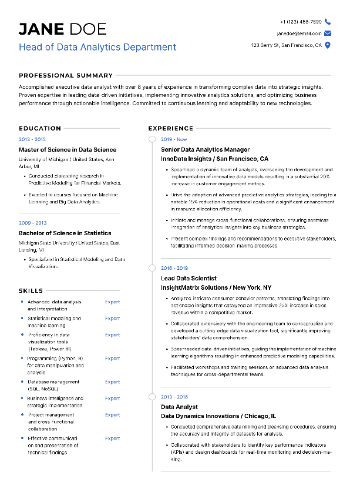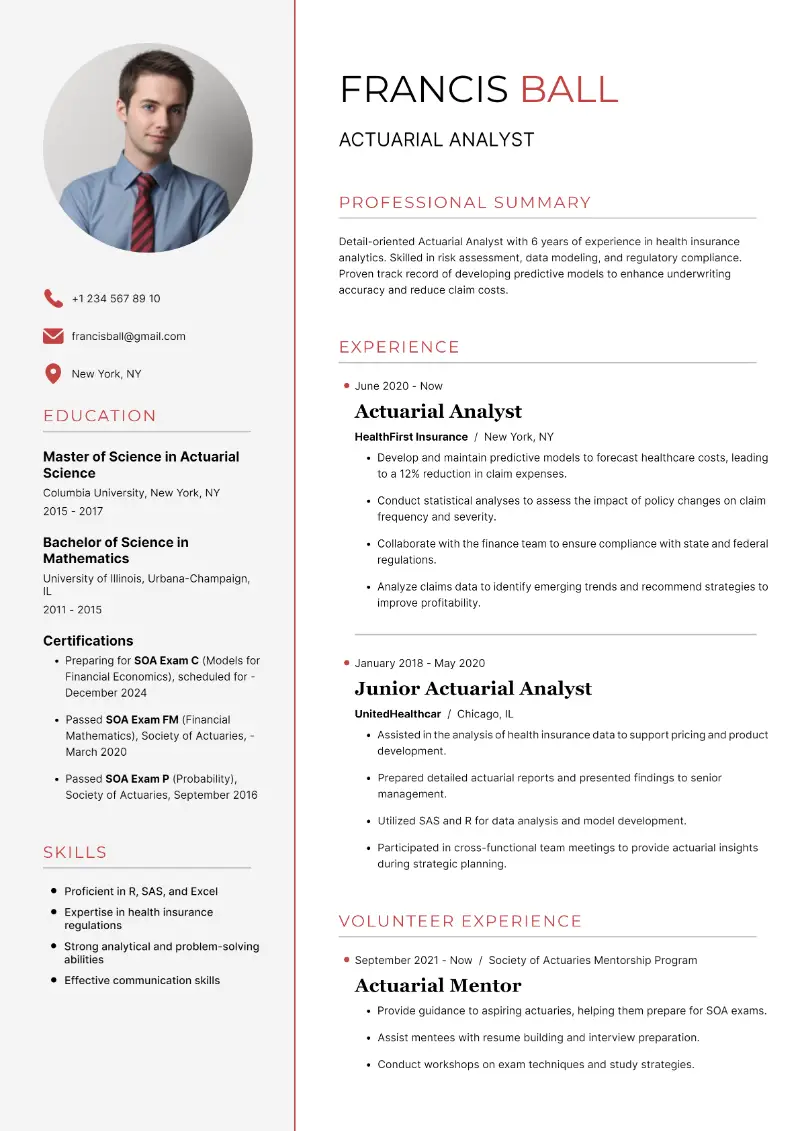Technical interview questions are a crucial part of the hiring process in many industries, particularly in fields like software development and engineering.
These are designed to assess a candidate's problem-solving skills, technical knowledge, and ability to think on their feet.
In this article, we’ll explore some of the most common technical interview questions, what employers are really looking for, and tips to help you prepare for these challenges.
What is a technical interview?
A technical interview is designed to assess knowledge and problem-solving abilities in a specific field.
Unlike traditional one that often focuses on personality traits or work experience, this type is tailored to examine how well a candidate can apply their expertise in real-world situations.
These assessments are common in sectors such as software development, engineering, IT, and data science, where practical skills are essential.
Some key objectives of technical interviews:
- Evaluating Problem-Solving Skills: Specialists are often presented with challenges to test their ability to think logically and come up with effective solutions.
- Assessing Technical Proficiency: Employers focus on specific competencies needed for the role, such as coding, systems design, or knowledge of tools and languages.
- Testing Communication: Candidates are frequently asked to explain their approach to solving problems, revealing how they articulate complex concepts to others.
- Determining Team Compatibility: Many technical interviews have scenarios where an ability to collaborate, teamwork skills and work efficiently with others is assessed.
Types of technical interview questions
This round typically involves a variety of queries to assess different aspects of your skills and knowledge. Here’s a breakdown of the most common types of interview questions for technical positions and some tips for tackling them effectively.
- 1. Algorithmic Tech Interview Questions
- Sorting algorithms (e.g., mergesort, quicksort)
- Searching algorithms (e.g., binary, depth-first search)
- Evaluating time and space complexity (e.g., big-O notation)
Tips for solving algorithmic technical interview questions:
- Understand clearly: Carefully read the description to ensure you get the task and any edge cases.
- Choose an appropriate algorithm: Select a method that best fits the requirements, balancing complexity and efficiency.
- Consider optimization: After solving the problem, examine your approach for potential improvements in performance.
- Practice common patterns: Familiarize yourself with well-known algorithms and their applications to save time during interviews.
- Explain your approach: Walk the recruiter through your reasoning and decision-making process.
- 2. System Design Technical Interview Questions
- Design a system to handle scalable web traffic
- Create the architecture for a content delivery network (CDN)
- Make a cloud-based solution for an e-commerce platform
Approach for tech interview questions:
- Clarify the requirements: Understand the scope before diving into the design. Ask about expected traffic, users, and any special needs.
- Break down the system: Divide it into smaller, manageable parts (e.g., database, frontend, APIs).
- Address scalability: Ensure that your design can handle future growth by considering factors like load balancing and data replication.
- Include fault tolerance: Plan for possible system failures and how the design can recover gracefully.
- Visualize your design: Use diagrams to illustrate the architecture and data flow.
- 3. Coding Technical Interview Questions
- Implement a function to find the common elements between two arrays
- Write a program to determine if a string is an anagram of another
- Develop a solution for a real-world problem, such as inventory management
Best practices for writing clean and efficient code:
- Focus on readability: Write code that is easy to understand. Employ meaningful names for variables and functions.
- Test thoroughly: Consider edge cases and inputs to ensure your solution works in various scenarios.
- Avoid unnecessary complexity: Keep your solution as simple and efficient as possible without compromising functionality.
- Optimize performance: Think about how to reduce time or space complexity, especially if dealing with large datasets.
- Debug logically: If something breaks, systematically identify and address the issue without rushing to fix it.
- 4. Problem-Solving & Logical Reasoning Questions
- Solve a puzzle involving logic, such as the "cannonball problem"
- Deduce the solution to a riddle, like the "two doors and two guards" puzzle
- Identify patterns in sequences or numbers
Approach for logical reasoning tech job interview questions:
- Decompose the problem: Break it into smaller, easier-to-manage parts before attempting to solve it.
- Think aloud: Share your thought process step-by-step to help the recruiter understand how you approach complex issues.
- Consider different solutions: Explore multiple strategies choose the most effective one.
- Stay composed: If the situation feels difficult, take a moment to reassess. Staying calm will help you think more clearly.
- 5. Behavioral Interview Questions for Technical Positions
- Describe a project where you used a new technology to solve a problem.
- Tell us about a time you faced a technical obstacle and how you resolved it.
- Share an experience where you had to collaborate with others to implement a technical solution.
Using the STAR method (Situation, Task, Action, Result):
- Situation: Set the stage by describing the context of the challenge.
- Task: Explain your role and what needed to be done.
- Action: Highlight the steps you took to address the situation, focusing on the technical aspects.
- Result: Discuss the outcome, emphasizing the positive impact and any measurable results (e.g., efficiency gains, reduced errors).
How do employers evaluate your responses?
In technical interviews, your responses are evaluated for more than just accuracy. HRs focus on several key areas to gauge your overall skills.
Clarity
Strong communication is key to demonstrating your abilities. Employers want to see that you can articulate complex concepts clearly and work well with others.
- Always explain your reasoning in a straightforward way.
- Pay attention to cues and ask for clarification when needed.
- Break down difficult concepts so they’re easily understood.
- Present your solution with assurance, but be open to feedback.
Correctness
Getting the right answer is essential, but interviewers also assess how well you account for potential edge cases and your overall grasp of the problem.
Efficiency
Employers look for solutions that are not only correct but also optimized. They assess whether your approach is scalable and efficient.
Common IT technical interview questions and answers
- 1. What is the difference between a stack and a queue?
- A stack follows the Last-In-First-Out (LIFO) principle, meaning the last element added is the first to be removed. It's like a stack of plates where you only take from the top. A queue follows the First-In-First-Out (FIFO) principle, where the first element added is the first to be removed, similar to a line at a ticket counter. While stacks are utilized for undo operations, queues are often used for scheduling tasks or handling requests.
- 2. Explain the concept of Big-O notation.
- Big-O notation is used to describe the performance or complexity of an algorithm in relation to its input size. It expresses the worst-case scenario for time or space requirements. For example, O(n) means the algorithm’s time increases linearly with the input, while O(n^2) grows quadratically. This helps determine the efficiency of algorithms, especially when dealing with large data sets or optimizing code.
- 3. What is a linked list?
- A linked list is a linear data structure where each element (node) points to the next one in the sequence, forming a chain. Unlike arrays, linked lists do not require contiguous memory, which allows for efficient insertion and deletion at any position. There are different types of linked lists, such as singly linked lists, where each node points to the next node, and doubly linked lists, where nodes point to both the next and previous nodes.
- 4. What is the difference between an array and a linked list?
- Arrays are contiguous blocks of memory where elements are indexed, allowing fast access but requiring a fixed size. In contrast, linked lists are made of nodes that contain references to the next node, making them flexible and efficient for dynamic insertion and deletion. However, accessing elements in a linked list takes linear time, while array access is constant.
- 5. What are the types of inheritance in OOP?
- Inheritance in OOP allows one class to inherit properties and methods from another. Types include single inheritance, where a class inherits from one parent; multiple inheritance, where a class inherits from more than one parent; multilevel inheritance, where a class inherits from a subclass; hierarchical inheritance, where multiple classes inherit from a single parent; and hybrid inheritance, which combines multiple types.
- 6. What is a binary tree?
- A binary tree is a hierarchical data structure where each node has at most two children, referred to as the left and right child. This structure enables efficient searching, insertion, and deletion operations. Binary trees serve as the foundation for more advanced structures like binary search trees, heaps, and AVL trees, which are optimized for specific tasks.
- 7. What is the difference between a binary tree and a binary search tree (BST)?
- A binary tree is a general structure with no specific ordering of nodes. A binary search tree (BST), however, arranges nodes so that the left child is smaller than the parent, and the right child is larger. This allows for efficient search, insertion, and deletion in logarithmic time on average. This ordering makes BSTs more efficient than regular binary trees for searching.
- 8. How does quicksort work?
- Quicksort is a divide-and-conquer sorting algorithm. It selects a pivot element, partitions the array into two sub-arrays (one with elements less than the pivot and one with greater), and recursively sorts the sub-arrays. The average time complexity is O(n log n), making it one of the fastest sorting algorithms for large datasets. It’s more efficient than simpler algorithms like bubble or insertion sort.
- 9. What is dynamic programming?
- Dynamic programming (DP) solves complex problems by breaking them into simpler subproblems, solving each subproblem only once, and storing the results for reuse. This technique is particularly effective for problems with overlapping subproblems, such as the knapsack problem or shortest path algorithms, as it avoids recalculating the same results, improving efficiency.
- 10. Explain the difference between deep and shallow copy.
- A shallow copy creates a new object but only copies references to the original nested objects, meaning changes to the nested objects will affect both the copy and the original. A deep copy, however, creates a new object and recursively copies all nested objects, ensuring the copy is completely independent of the original.
- 11. What is a hash table?
- It stores key-value pairs and uses a hash function to map keys to indices in an array. This allows for fast access to values based on keys, typically in O(1) time. When two keys hash to the same index, collisions are resolved using techniques like chaining or open addressing. Hash tables are widely used in databases and caching for quick lookups.
- 12. What is the difference between pass by value and by reference?
- Pass by value creates a copy of the variable, and the function operates on it, leaving the original unchanged. Pass by reference, however, passes the actual reference (or memory address) of the variable, allowing the function to modify the original directly. Pass by value is used to avoid unintended changes, while pass by reference is used when you need to modify the argument in place.
- 13. What are the four pillars of OOP?
- The four pillars of Object-Oriented Programming are Encapsulation, which bundles data and methods into a single unit, hiding unnecessary details; Abstraction, which exposes only essential features and hides implementation details; Inheritance, where a class derives properties from another class; and Polymorphism, which allows objects of different types to be treated as instances of the same class, enhancing flexibility.
- 14. How do you find the middle element of a linked list?
- To find the middle element of a linked list, use two pointers: one slow and one fast. The slow pointer moves one step at a time, while the fast two steps. When the fast pointer reaches the end of the list, the slow one will be at the middle. This approach only requires a single pass through the list, making it time-efficient (O(n)).
- 15. What is a race condition?
- A race condition occurs when multiple threads or processes attempt to access and modify shared data at the same time, leading to unpredictable behavior. This typically happens when proper synchronization mechanisms are not in place. It can result in inconsistent or incorrect data. To prevent race conditions, techniques like locks, semaphores, or mutexes are used to ensure proper sequencing of operations.
- 16. What is the time complexity of binary search?
- The time complexity of binary search is O(log n), where n is the number of elements in the array. Binary search works by repeatedly dividing the space in half, narrowing down the possible location of the target element. This logarithmic time complexity makes it much faster than linear search (O(n)), especially for large datasets.
- 17. What is a deadlock?
- A deadlock occurs when two or more processes are blocked indefinitely because each is waiting for the other to release a resource. This situation typically arises in multi-threaded applications when resources are not properly managed, leading to a standstill. To avoid deadlocks, developers use techniques such as lock ordering, timeouts, or resource hierarchies to ensure that processes don’t end up waiting indefinitely for resources.
- 18. What is the difference between a class and an object?
- A class is a blueprint for creating objects in OOP. It defines the properties (attributes) and methods (functions) that the objects created from it will have. An object, on the other hand, is an instance of a class with actual values for its attributes and the ability to execute its methods. While a class is a template, an object is a specific entity based on that.
- 19. What is the purpose of a constructor in OOP?
- A constructor is a special method used to initialize objects when they are created from a class. It sets up the initial state of the object by assigning values to its attributes. In most languages, constructors are called automatically when an object is instantiated, and they help ensure that objects start with valid data.
- 20. What is the difference between multithreading and multiprocessing?
- Multithreading involves running multiple threads within a single process, allowing tasks to run concurrently and share resources like memory. This is ideal for tasks that require frequent communication and shared data. Multiprocessing, on the other hand, involves running multiple processes on separate CPUs or cores, providing true parallelism. This is beneficial for CPU-bound tasks that can be divided into independent operations, as each process runs in its own memory space.
Conclusion
Mastering technology interview questions requires a blend of preparation, practice, and understanding of the role you're applying for.
By reviewing common questions, studying key concepts, and honing your problem-solving abilities, you'll be ready to tackle any conversation with confidence.
Remember, each interview is a learning experience that brings you closer to your career goals.
Create your professional Resume in 10 minutes for FREE
Build My Resume






